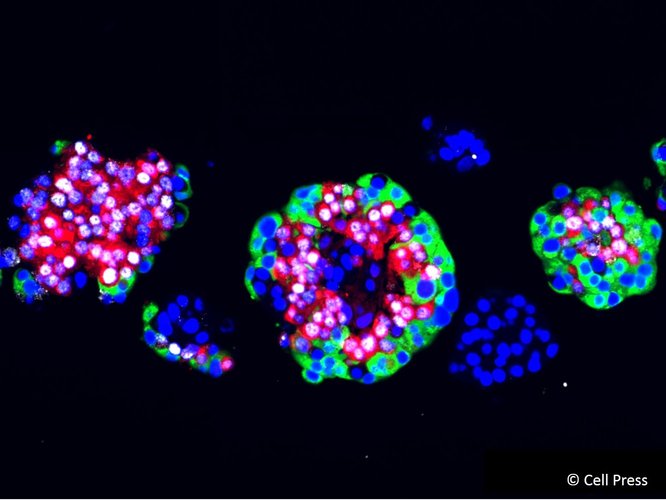Breakthrough in diabetes research: Pancreatic cells produce insulin instead of glucagon upon artemisinin treatment
Share
FDA-approved artemisinins, since decades used to treat malaria, transform glucagon-producing alpha cells in the pancreas into insulin producing cells – thereby acquiring features of beta cells, the cell type damaged in type 1 diabetes. Those groundbreaking results, published in Cell, provides the basis for a promising new approach towards a cure for type 1 diabetes.
For years, researchers around the globe tried various approaches with stem- or adult cells in order to replace destroyed beta-cells in the bodies of diabetes patients with newly-produced insulin-secreting cells. Now a research team coordinated by Stefan Kubicek, Group Leader at CeMM, eventually got a lead: In their latest study, published in Cell (DOI: 10.1016/j.cell.2016.11.010), they showed that malaria drug artemisinin hit the bulls eye.
“With our study, we could show that artemisinins change the epigenetic program of glucagon-producing alpha cells and induce profound alterations of their biochemical function”, Stefan Kubicek explains. The epigenetic master regulator Arx was identified as the key molecular player in the transformation process. “Arx regulates many genes that are crucial for the functionality of an alpha cell,” says Stefan Kubicek. Together with the group of Jacob Hecksher-Sorensen at Novo Nordisk, Kubicek’s team proved that Arx is sufficient to confer alpha cell identity and does not depend on the body’s influence.
In addition, Stefan Kubicek´s team and their collaborators (Martin Distel, CCRI Wien; Dirk Meyer, Leopold-Franzens-Universität Innsbruck; Patrick Collombat, INSERM Nice; Physiogenex, Labege) observed an increased beta cell mass and improved blood sugar homeostasis in diabetic zebrafish, mice and rats upon artemisinin delivery. As the molecular targets for artemisinins in fish, rodents and humans are very similar, chances are high that the effect on alpha cells will also occur in humans.
Publication:
Jin Li, Tamara Casteels, Thomas Frogne, Camilla Ingvorsen, Christian Honoré, Monica Courtney, Kilian V.M. Huber, Nicole Schmitner, Robin A. Kimmel, Roman A. Romanov, Caterina Sturtzel, Charles-Hugues Lardeau, Johanna Klughammer, Matthias Farlik, Sara Sdelci, Andhira Vieira, Fabio Avolio, Francois Briand, Igor Baburin, Peter Májek, Florian M. Pauler, Thomas Penz, Alexey Stukalov, Manuela Gridling, Katja Parapatics, Charlotte Barbieux, Ekaterine Berishvili, Andreas Spittler, Jacques Colinge, Keiryn L. Bennett, Steffen Hering, Thierry Sulpice, Christoph Bock, Martin Distel, Tibor Harkany, Dirk Meyer, Giulio Superti-Furga, Patrick Collombat, Jacob Hecksher-Sørensen, and Stefan Kubicek. Artemisinins Target GABAA Receptor Signaling and Impair α Cell Identity, Cell 2016. DOI:10.1016/j.cell.2016.11.010.
Funding:
This work was partially funded by the Juvenile Diabetes Research Foundation (JDRF), the European Research Council (ERC), the Medical University of Vienna, the European Molecular Biology Organization (EMBO), the NovoNordisk Foundation, the European Commission FP7 Marie Skłodowska-Curie Actions, the Austrian Science Fund (FWF), the Austrian Academy of Sciences (ÖAW); the INSERM AVENIR program; the INSERM, the FMR, the ANR/BMBF, LABEX SIGNALIFE, the Max- Planck Society, Club Isatis, Mr. and Mrs. Dorato, Mr. and Mrs. Peter de Marffy-Mantuano, the Fondation Générale de Santé and the Foundation Schlumberger pour l’Education et la Recherche.

